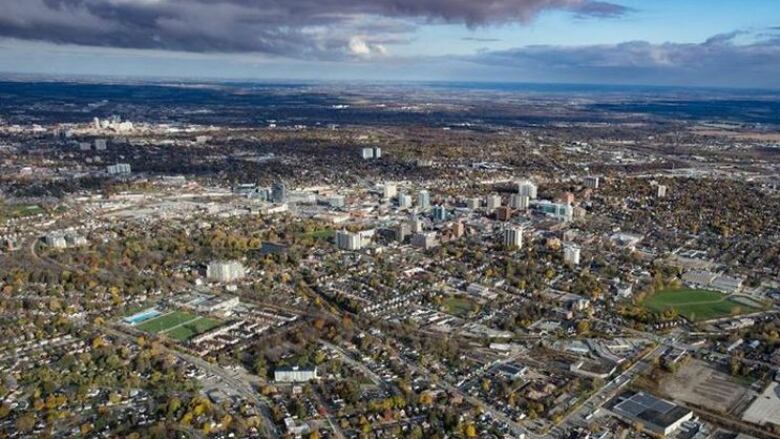Waterloo region unveils proposals for climate-friendly development
'Complete communities,' active transportation, and net-zero buildings are part of the vision

The Region of Waterloo is proposing a number of measures to mitigate climate change in future development.
It has published a document as part of a review of the Regional Official Plan titled Policy Direction Paper on Climate Change, and it presented an update on its efforts to regional council on Tuesday.
The review analyzes every aspect of the plan with a view to meeting Waterloo region's climate target of reducing emissions to 80 per cent below 2010 levels by 2050.
"It has a lot to do with intensification," said Tom Galloway, the chair of the region's planning and works committee. "It's exactly the reason we built the LRT system: to create intensification and reduce the amount of farmland that we were consuming in spreading out."
The document calls for developing what it calls "complete communities," neighbourhoods where people can meet their daily needs, such as buying groceries, without travelling more than 15 minutes from home on foot or by bike.
It also calls for reshaping the transportation system to discourage the use of automobiles and encourage active transportation, such as walking or cycling.
Discouraging automobiles
"All homes and destinations should provide secure bike parking, storage, and [electric] charging for e-bikes for residents and patrons," the document reads. "Businesses and institutions should provide secure bike/ebike parking for their customers and patrons and secure bike storage for their employees."
Parking for automobiles needs to be reduced and reassessed, it says.
"We're not doing away with the car necessarily, but we're trying to de-emphasize the car and take some of the space away from cars that cars currently enjoy so that you do have spaces for active transportation, be they bike lanes, separated bike lanes, or trails for walking," Galloway said.
Building changes
In addition, the document calls for moving to net-zero buildings, which use the same – or less – energy than the amount of renewable energy they create on-site.
The region is looking at developing the transit hub at King and Victoria Streets in such a way, Galloway said.
"Your planting [of plants] can get you points for producing oxygen to go into the air. Having renewable energy obviously contributes to the calculation," he explained.
Building materials also play a role, he added.
Subdivisions containing single-family dwellings will not be banned or eliminated under the new proposals, Galloway said, but the advent of the LRT will encourage more growth up rather than out.
"Where we do build those new subdivisions or try to retrofit older subdivisions? We want to try and do it on the basis of complete communities and access to the active transportation system," he added.
"We should be trying to retrofit in the active transportation facilities that... might not have been constructed at the time that the subdivision was put in. And we should be looking for opportunities to complete the community with maybe some commercial spaces or office spaces so that they could be able to walk or cycle to get their groceries or go to a doctor's office."
More information on the official plan review can be found on EngageWR.